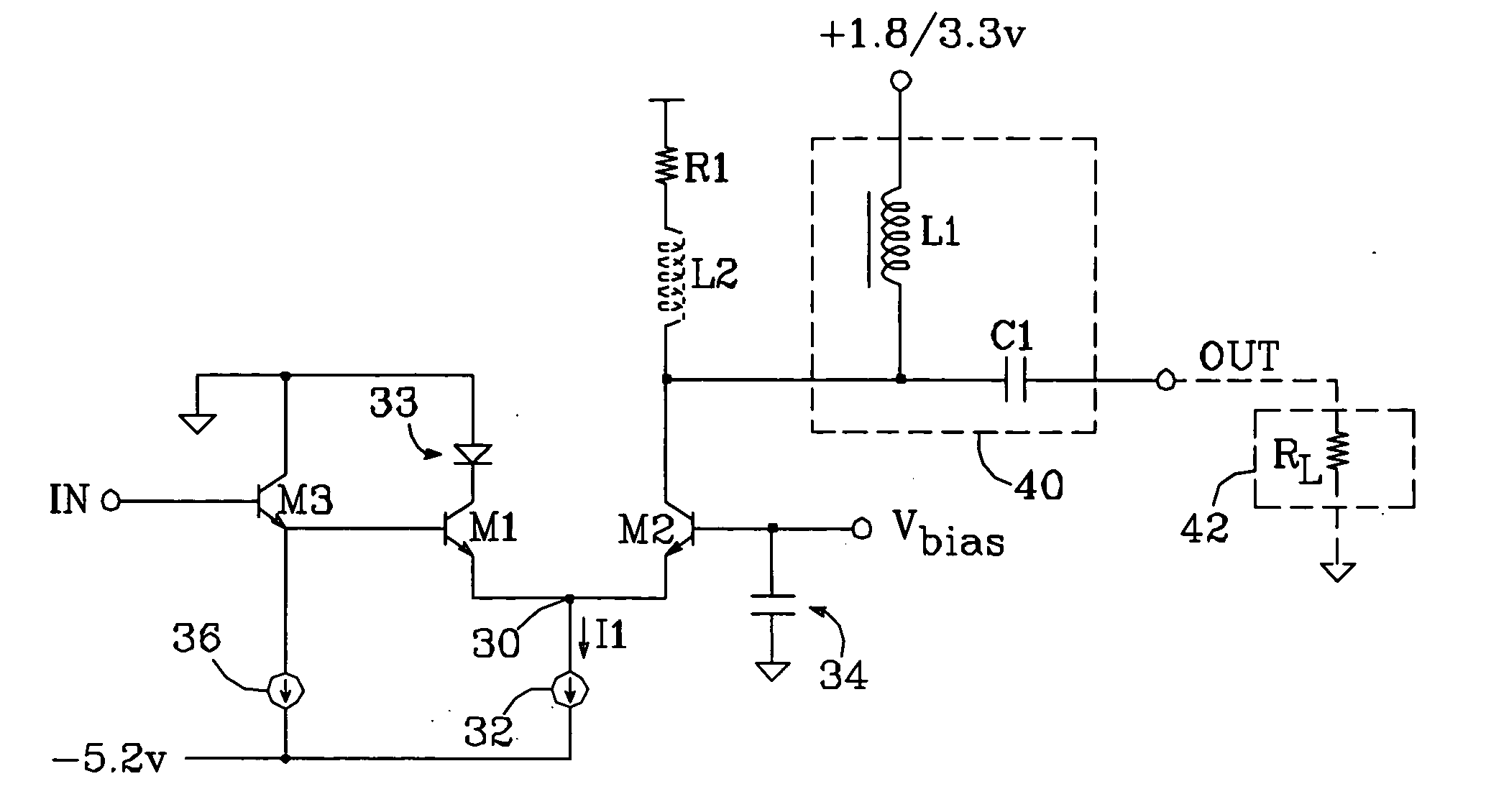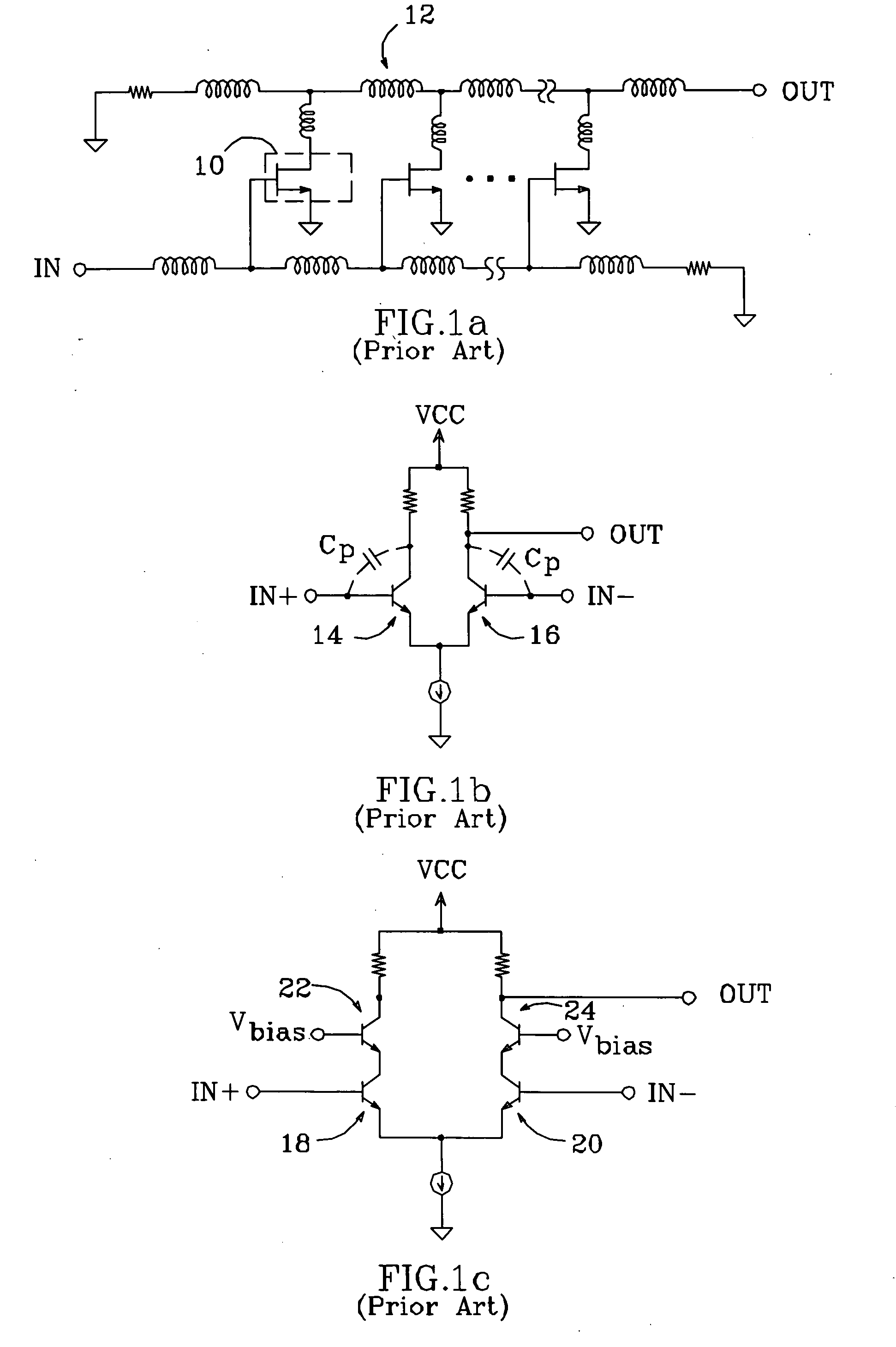Fast high-swing modulator driver circuit
a driver circuit and high-swing technology, applied in the field of electronic modulator driver circuits, can solve the problems of adding to the complexity of the system, and distortion significantly affecting the bit-error rate and thus the usable distance of the fiber optic link,
- Summary
- Abstract
- Description
- Claims
- Application Information
AI Technical Summary
Benefits of technology
Problems solved by technology
Method used
Image
Examples
Embodiment Construction
[0023] The present invention is a driver circuit which includes an output stage capable of delivering a large output voltage swing at high speeds, making the driver circuit particularly well-suited for driving certain electro-optical modulators. The basic principles of a driver circuit in accordance with the present invention are illustrated in the schematic shown in FIG. 2. A circuit's output stage comprises a pair of bipolar transistors M1 and M2 arranged as a differential pair, with their emitters connected together at a common node 30 and a current source 32 connected between node 30 and a supply voltage (−5.2 volts in the example shown, though other voltages could also be used) which provides a bias current I1 to the differential pair. The base of transistor M1 provides an input terminal for the stage, and the collector of M2 provides the driver circuit's output The collector of input transistor M1 is coupled to ground, preferably via a diode 33 which serves to reduce the power...
PUM
| Property | Measurement | Unit |
|---|---|---|
| current | aaaaa | aaaaa |
| resistance | aaaaa | aaaaa |
| drive voltage | aaaaa | aaaaa |
Abstract
Description
Claims
Application Information
 Login to View More
Login to View More - R&D
- Intellectual Property
- Life Sciences
- Materials
- Tech Scout
- Unparalleled Data Quality
- Higher Quality Content
- 60% Fewer Hallucinations
Browse by: Latest US Patents, China's latest patents, Technical Efficacy Thesaurus, Application Domain, Technology Topic, Popular Technical Reports.
© 2025 PatSnap. All rights reserved.Legal|Privacy policy|Modern Slavery Act Transparency Statement|Sitemap|About US| Contact US: help@patsnap.com



